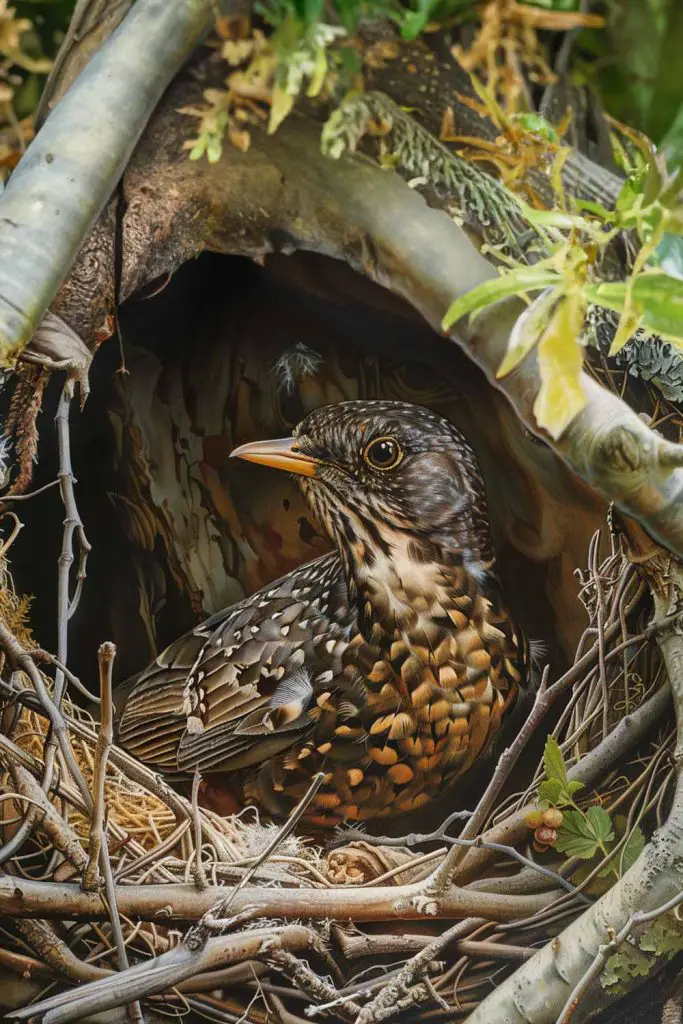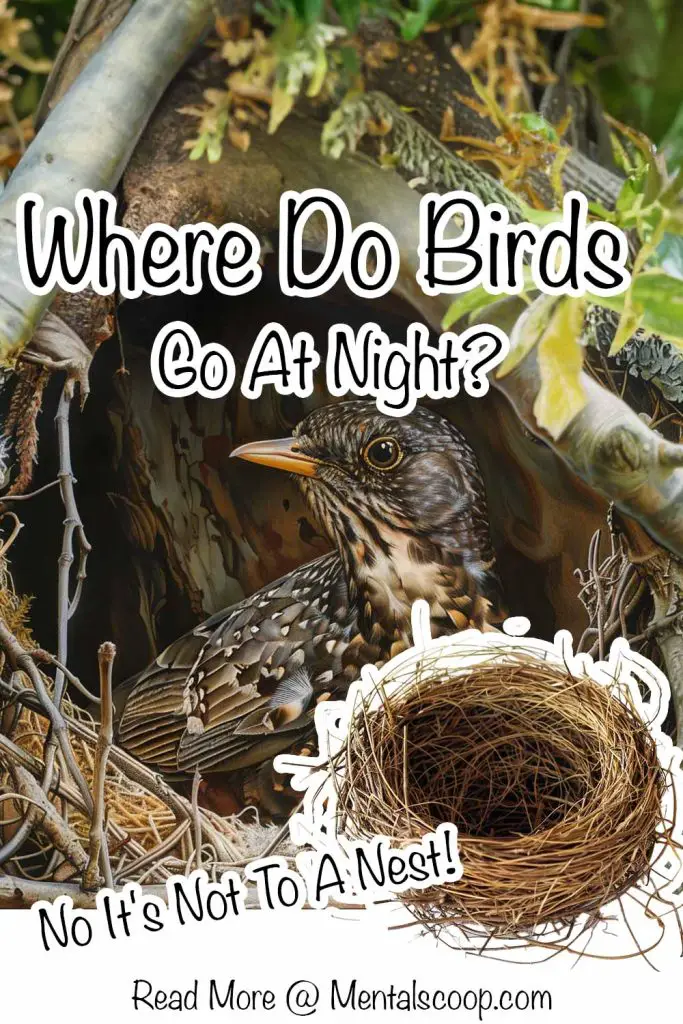Where Do Birds Go At Night? & No It’s Not To A Nest!

As the sun dips below the horizon and the hustle and bustle of the day fades into the twilight, the world undergoes a transformation. While many creatures retreat to the safety of their homes, one question lingers in the minds of curious observers: where do birds go at night?
Contrary to popular belief, the answer isn’t as straightforward as a return flight to their nests. Birds, with their intricate behaviors and adaptations, embark on a fascinating nocturnal journey that often goes unnoticed by human eyes.
The Mystery of Bird Disappearance
As the sun dips below the horizon and darkness cloaks the landscape, have you ever wondered where birds disappear to at night? It’s a question that has intrigued curious minds for centuries. Contrary to popular belief, most birds don’t simply fly back to their nests at sunset.
Their nocturnal activities are as fascinating as they are elusive.
The Avian Evening Commute
As dusk settles in, many birds engage in an evening commute to find suitable roosting spots for the night. They flit and glide from their foraging grounds to communal roosting areas, often located in dense foliage or sheltered nooks.
Bird Hotels and Roosting Spots
Birds seek refuge in a variety of locations when night falls. Dense shrubbery, evergreen trees, and even abandoned buildings serve as makeshift “bird hotels” where they can rest safely away from predators and the elements.
Urban Bird Roosting Behavior
Even in bustling cities, birds find places to rest their wings. Urban environments offer a plethora of roosting options, from tree-lined streets to high-rise buildings. Some species, like pigeons and sparrows, adapt remarkably well to city living and may even roost on building ledges or under bridges.
How Birds Blend In
Camouflage plays a crucial role in bird survival, especially at night. Many species have evolved plumage that helps them blend seamlessly into their surroundings, providing them with essential cover from predators under the cloak of darkness.
The Role of Bird Calls
Communication is key, even in the dark. Birds often use calls to stay connected with their flock members and to navigate to communal roosting sites. These calls serve as beacons in the night, guiding individuals to safety and ensuring group cohesion.
Migratory Birds and Nighttime Travel
For migratory birds, the night sky is a highway of epic proportions. Guided by celestial cues and instinctual knowledge passed down through generations, these birds embark on incredible journeys spanning continents. Nighttime offers them both cover and favorable winds for long-distance travel.
The Importance of Group Roosting
There’s safety in numbers, even when it comes to sleeping. Many bird species roost in large groups, a behavior known as communal roosting. By huddling together, they not only stay warm but also increase their collective awareness, detecting and deterring potential threats more effectively.
Protecting Bird Habitats at Night
As human activities continue to encroach upon natural habitats, preserving nighttime roosting sites becomes increasingly crucial for bird conservation. Efforts to reduce light pollution, protect green spaces, and create bird-friendly habitats are essential for safeguarding avian populations worldwide.
The answer to the question “Where do birds go at night?” is far more complex and intriguing than a simple flight back to a nest. From urban skyscrapers to remote woodlands, birds navigate the night with remarkable adaptability and resilience, ensuring their survival in a world that never sleeps.

More interesting articles you may be interested in reading:

